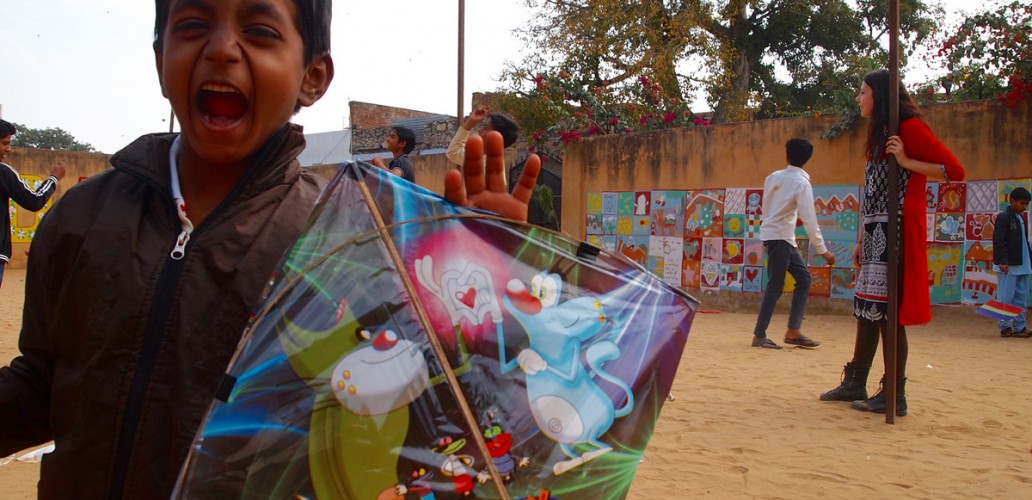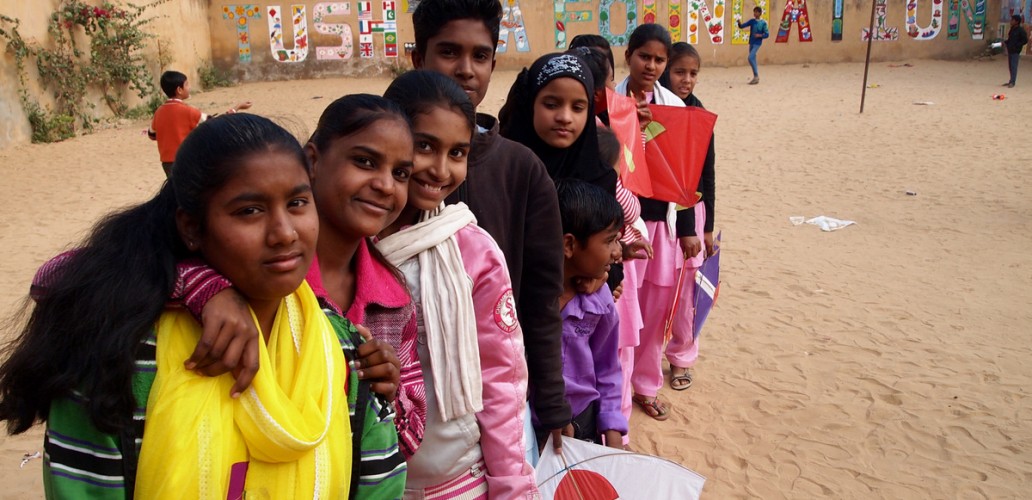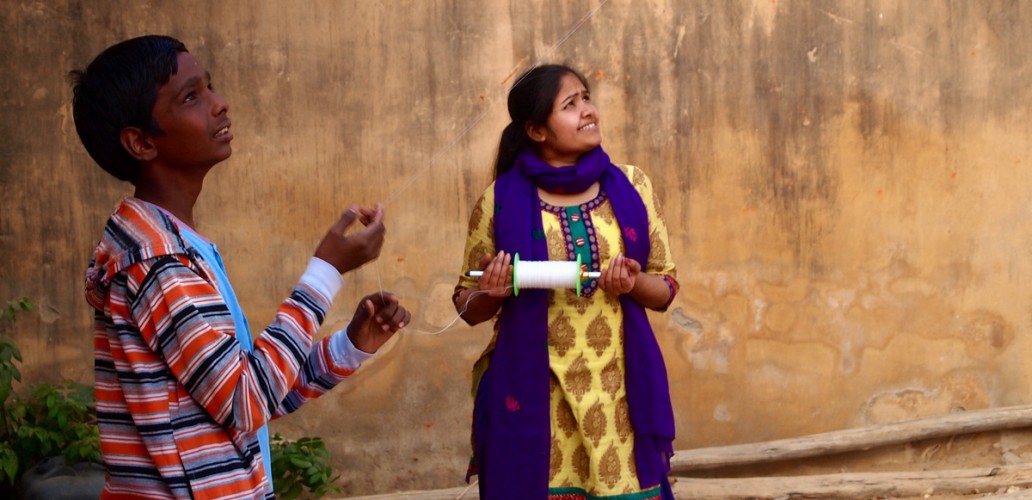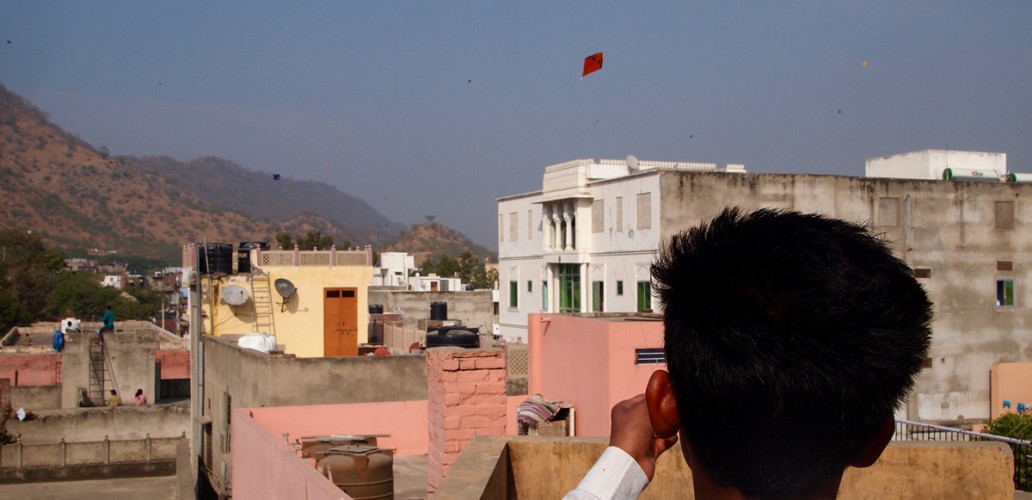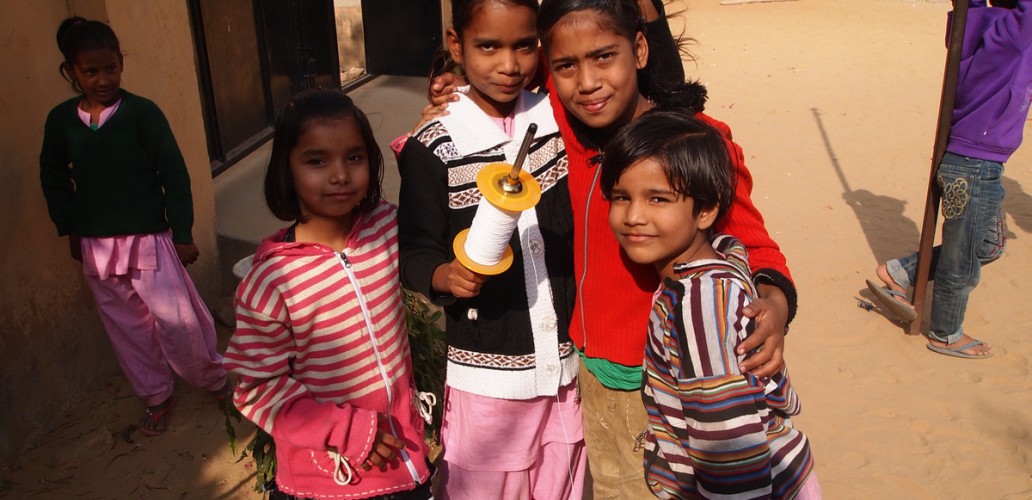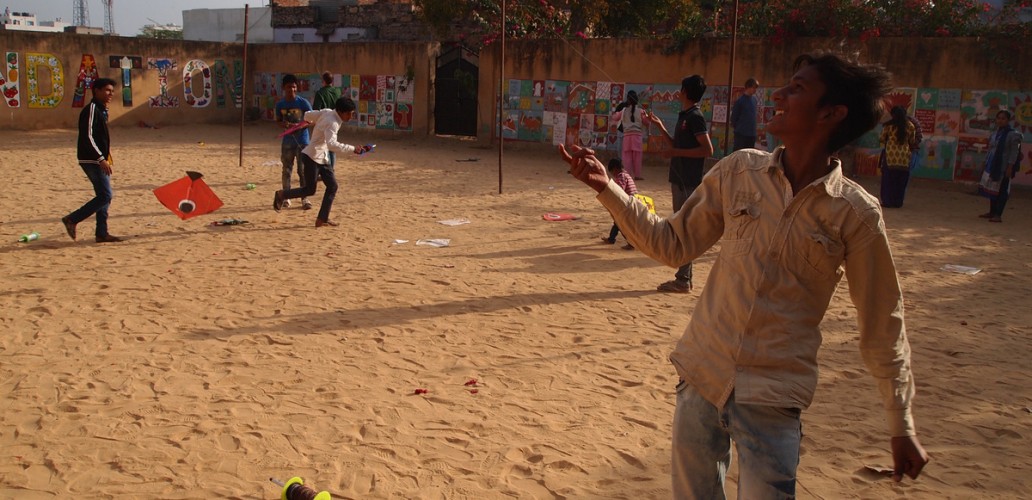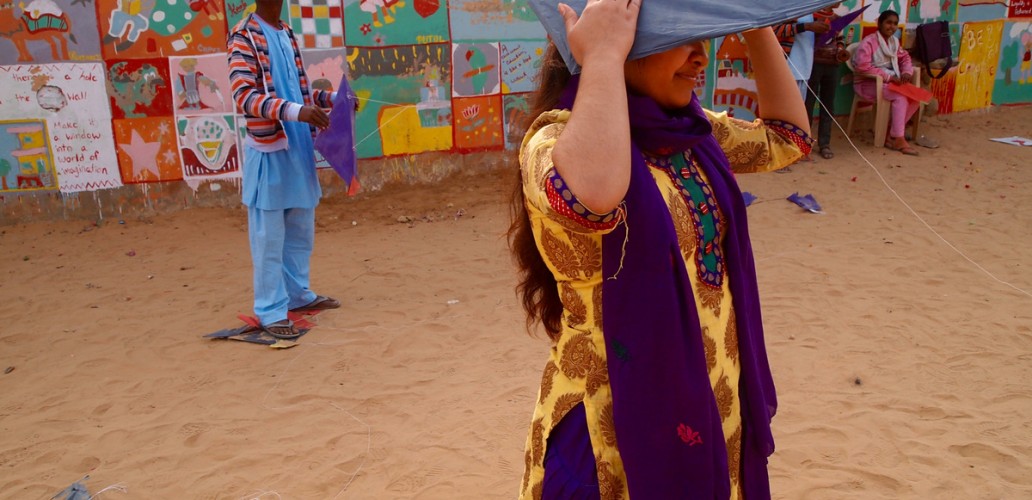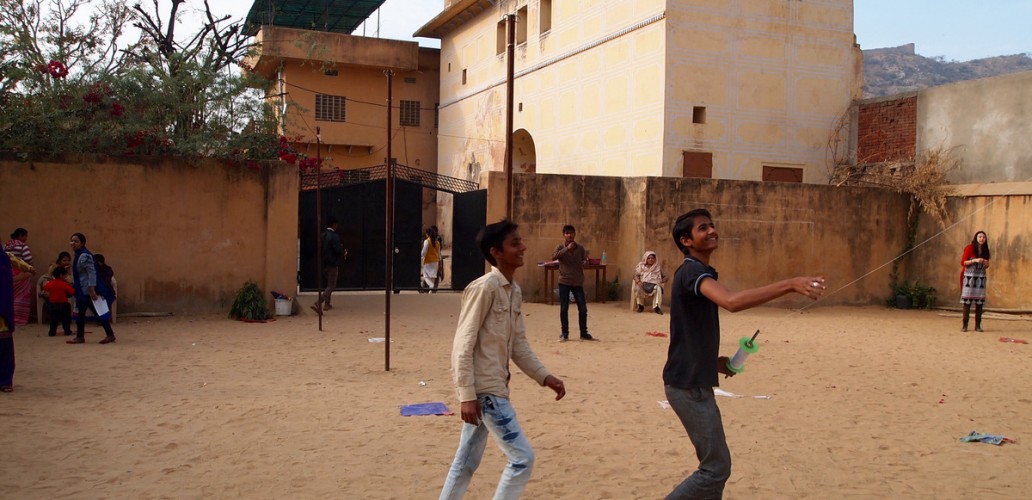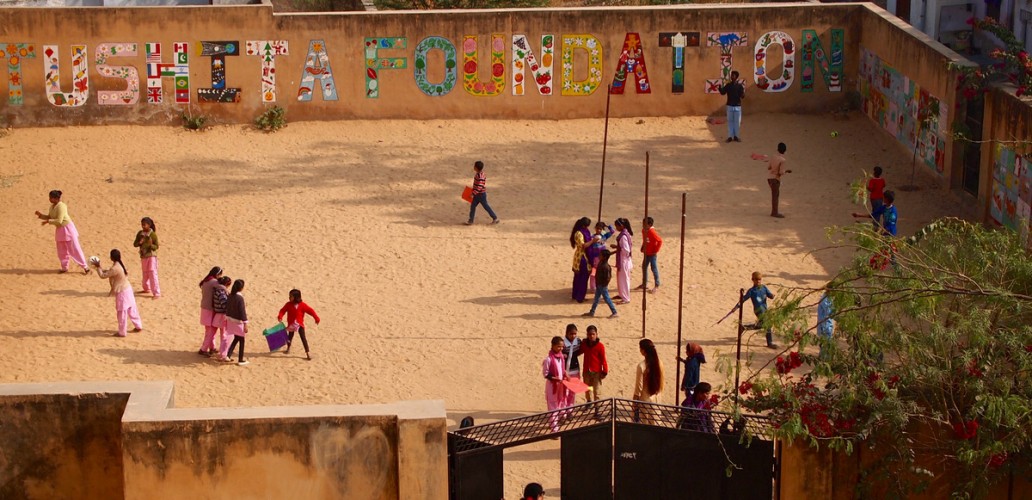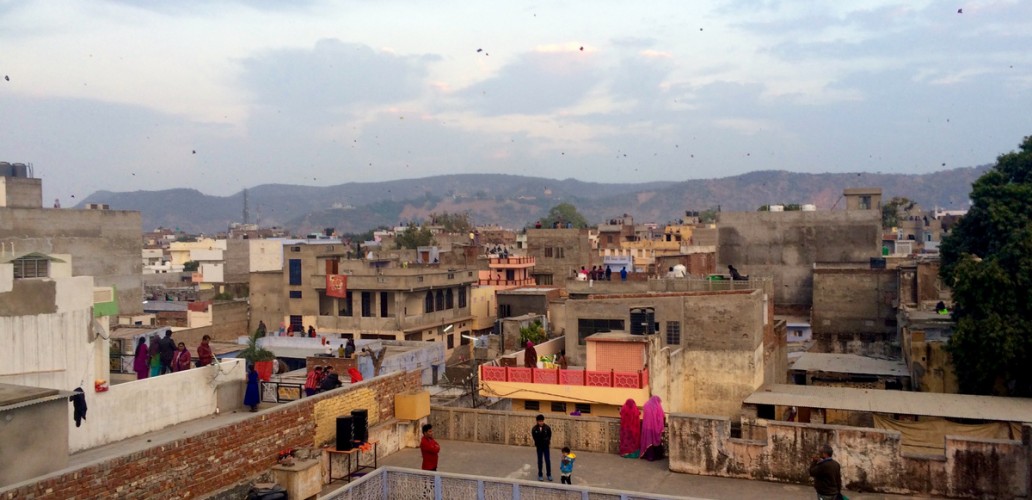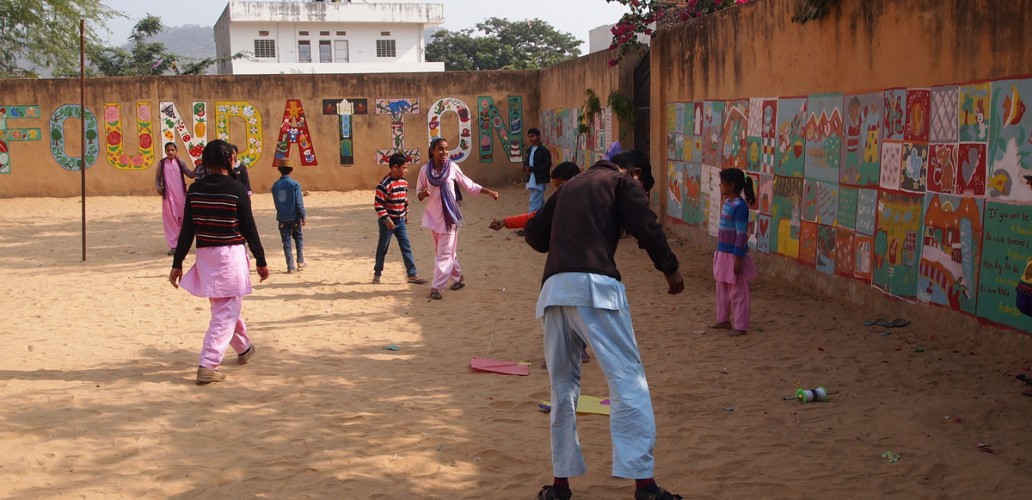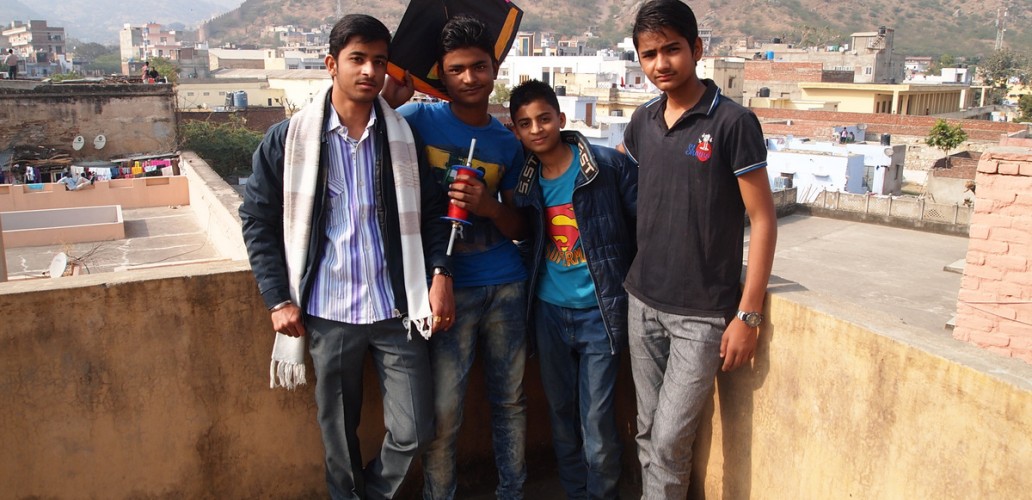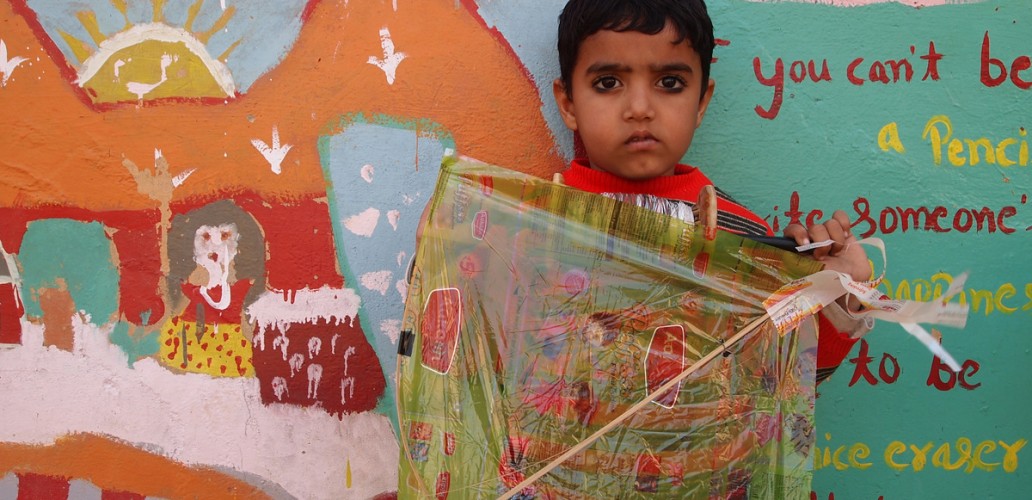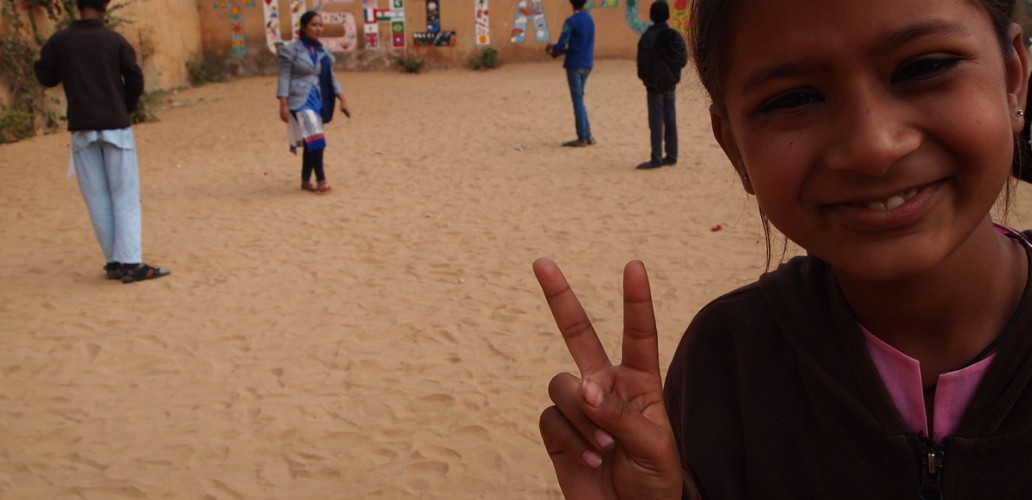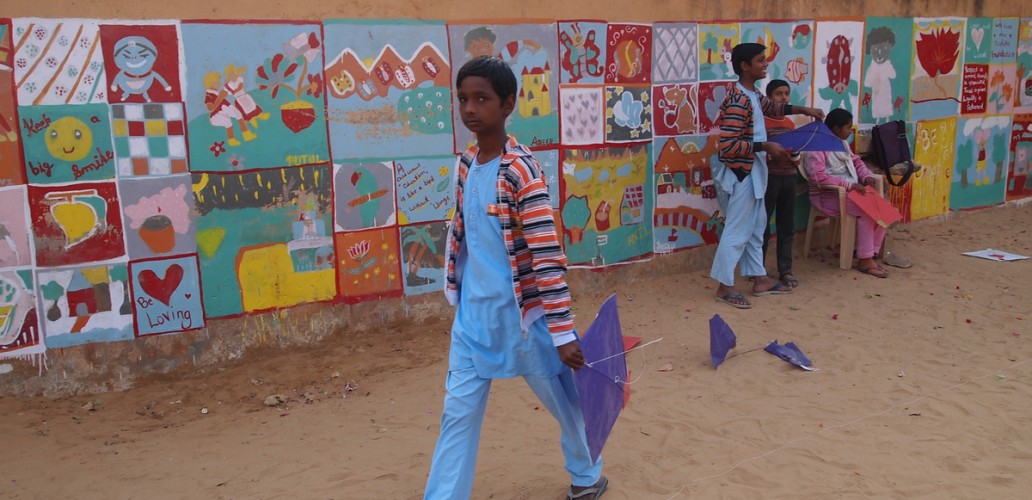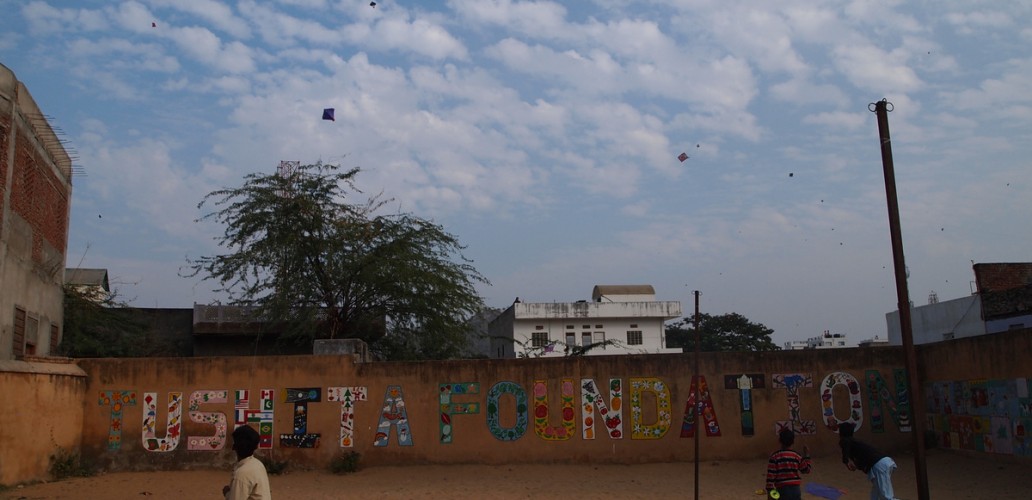Makar Sankranti: The Kite Festival
By Anna Andriychuk
It was on a mid-December morning that I first noticed a change in my daily commute to the Tushita Foundation in Amer. Head resting against the passenger’s seat window, I stared listlessly outside, blind to the chaotic bustle that is Jaipur traffic. After three months in India, the deafening roar of rickshaws and motorcycles, the clamor and commotion of thousands of voices, and the monkeys scrambling from building to building were no longer the assault on my senses that they had once been. It had all become so familiar, so natural, that the slightest novelty immediately stood out. In the trees that lined the road to Amer, I noticed splashes of color in the otherwise drab, withering remnants of previously lush, green foliage. Kites. With each passing day, the familiar scenery continued to transform: kite shops popped up on every street corner, multicolored kites dotted the clear, azure sky, and the trees could no longer conceal their vibrant captives from even the most untrained eyes. Makar Sankranti, the Kite Festival, was approaching, and all were getting ready.
If you asked my students at the Foundation to name their favorite holiday, you could almost be forgiven for thinking that India only celebrates two festivals: Makar Sankranti and Holi. The revelry and playfulness of Holi are recognized around the world. Could Makar Sankranti, I thought, really hold a candle to the Festival of Colors? After experiencing first-hand the energy and fervor of Makar Sankranti, the shouts of joy and fits of laughter from children, teachers, and volunteers alike, I now understand the allure of this January day.
Makar Sankranti will always evoke memories of bright-eyed children and their kites. I will remember the kids’ grinning faces as their kites soar through the air; the looks of sheer focus and determination when they pinpoint a target to cut; the smirks and cheers when they succeed, and the frenzy that overcomes them when they spot a cut kite descending their way. And while these scenes of exhilaration and hilarity will always be a highlight of my time in India, there is much more to Makar Sankranti than just kites. The name itself conveys its astrological and religious significance: ‘Makar,’ means Capricorn, and ‘Sankranti,’ means transition. Makar Sankranti, celebrated on either the 14th or 15th of January, thus marks the transition of the Sun into the zodiac sign Capricorn, the day on which the Sun begins its entry into the Northern Hemisphere. It is an auspicious day devoted to the worship of Lord Surya, the Sun God, who on this occasion is believed to visit his estranged son, Lord Shani, the ruling Deity of Capricorn. This story of Father and Son, who put their bitterness for one another behind them, reveals yet another facet of Makar Sankranti. It is a day of forgiveness and new beginnings. It is a day to appreciate Nature and one another; to reflect and give thanks for all the blessings of the previous year.
This year’s Makar Sankranti turned out to be a rare two-day event. It was as if the Universe knew that Caroline, Ferruccio, Will and I needed all of the extra kite-flying practice we could get. Our Makar Sankranti began in the morning hours of January 14, the day we would all celebrate together at the Foundation. Caroline and I decided to get a head-start on the festivities, so we hopped on a city bus, kite spools in hand, and arrived in Amer around 11 am, which was already bustling with noise and activity. After stopping at our neighborhood kite shop to buy yet another two dozen kites, we went off to Rahela’s home for our first round of kite-flying. When we arrived, we were met with an empty house and a crowded rooftop. Family, friends, and neighbors of all ages were already occupied with kite and thread. My eye was immediately drawn to an adult man who was waving around a gigantic tree branch, running from one side of the rooftop to the other, jumping sporadically. I stared, mesmerized, at his movements, trying to decipher them. It was only when I looked up a second or two later and saw a cut kite swaying nearby in the breeze that I realized what the branch actually was: a kite catching instrument. It was the first of many giant sticks that I would encounter that day. Caroline and I quickly threaded and tied our own kites, which were then adjusted by more experienced hands. We quickly got to work.
One of my favorite places to be in India is on a rooftop; no matter where I am, the view is incredible and the atmosphere is peaceful yet exhilarating. On Makar Sankranti, ‘incredible’ is an understatement. Standing on Rahela’s roof, the scenery around us took my breath away. The crisp, blue sky teemed with more kites than you could count, framed by Amer’s picturesque mountains. Every rooftop and terrace in sight was filled with families; excited shouts pierced the air, barely audible over the Bollywood hits blasting from all sides. Every so often, I heard a faraway shout that sounded unmistakably like “Anna-mam.” I spun around, scanning the neighboring houses until I spotted a waving hand in the distance. I recognized one of my students, flying a kite on his rooftop.
After a few hours and a delicious lunch at Rahela’s, Caroline, Rahela, and I left for the Foundation for Round 2. Along the way, there was not a child to be seen without a kite in his hand. I headed over to the roof with some of the older students, where I could see the children slowly trickling into the playground. When most of the students had arrived, they were lined up rank and file and handed a kite. Over the next several hours, the children, teachers, and volunteers flew, cut, and chased kites in a flurry of excitement. The atmosphere was electrifying. Slowly, the playground transformed into a graveyard of broken, discarded kites. I tried my best to keep up, but my arm began to ache and the cuts on my finger multiplied by the hour, unhindered by my makeshift packing-tape bandaids. Despite my stubborn pride, I came to welcome the increasingly frequent question, “Mam, can I help you with that?”
I wish I could say that days of practicing with incredibly skilled kids and teachers had made me, not a great kite-flyer, but at least an adequate one. But this was simply not the case this Thursday afternoon. Flying kites seems to be such a straightforward, even simple, art. I listened to others’ instructions, followed their advice, and paid attention to every move of the arm and flick of the wrist. But less than ten seconds after I was handed a kite, effortlessly launched hundreds of feet into the air, I would make one innocuous move and it would come plummeting back down. Keeping it in the air, however, is actually the “easy” part; getting it off the ground has baffled me for days. “It has to be some sort of trick,” Will uttered one day, echoing my thoughts exactly. How could everyone else do it with such ease? By the end of the day, I was able to attain some level of mediocrity: I could get the kite into the air, if the wind was particularly kind. I could even keep it afloat for a minute or two, if the other kite-flyers were also particularly kind (they never are). However, cutting other people’s kites, the most enjoyable part of it all, continues to elude (but motivate) me.
When the evening came to an end, I asked one of my students if he would be flying kites the following day as well. “More and more,” he replied. The more I watch these kids, the more obvious it becomes that flying kites is in their blood. When we left the Foundation, Caroline, Will, Ferruccio and I made our way to yet another rooftop, where we were met with even more kites, more music, and more fun. After darkness settled, and the kites were displaced by bright paper lanterns and fireworks, we finally went home to our final rooftop of the night. The next day, after spending most of the afternoon recuperating from the previous day’s festivities, we grabbed a kite in one hand, some of Bim Singh’s fried snacks in the other, and headed to our roof to do it all again. I can’t remember the last time I had so much fun with 6/100th of a dollar (the cost of a kite)! Makar Sankranti, like many of India’s festivals, was a captivating blend of rich colors, delectable flavors, music, warmth, and intoxicating laughter, and I am so blessed to have experienced it all.

